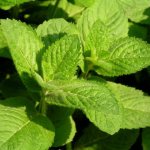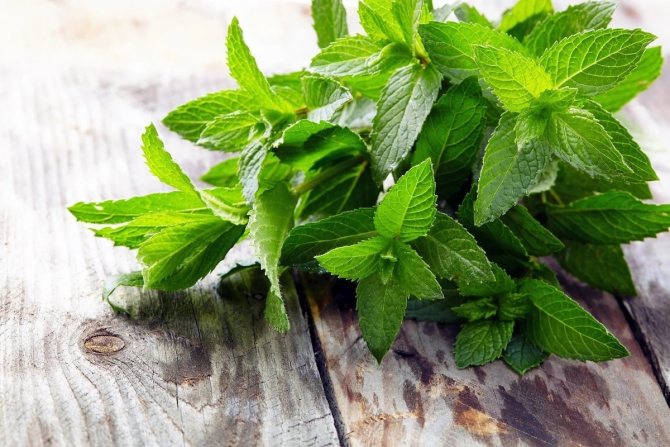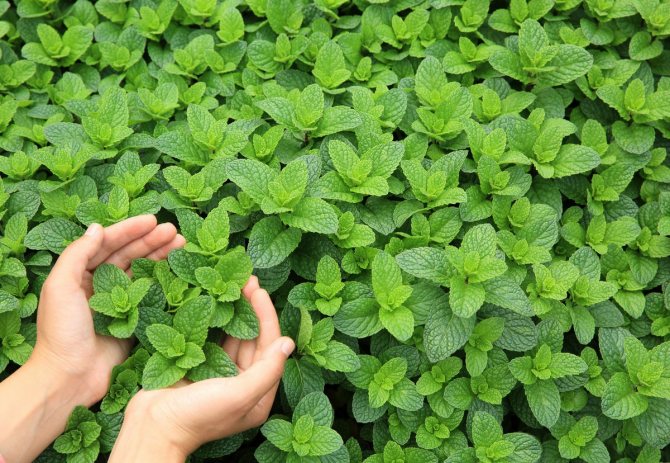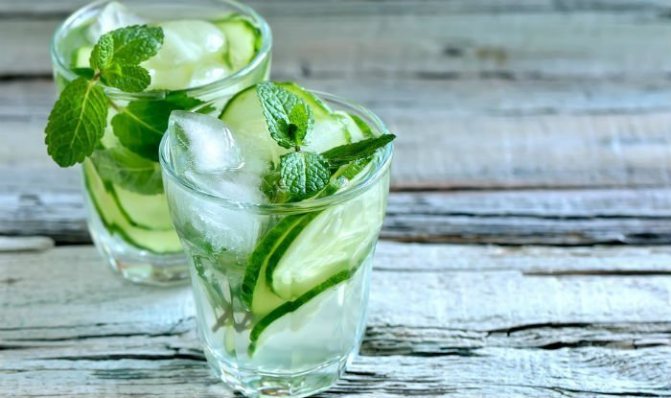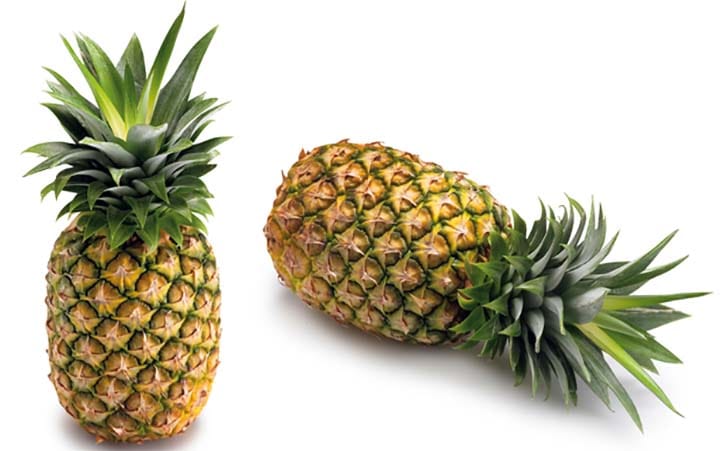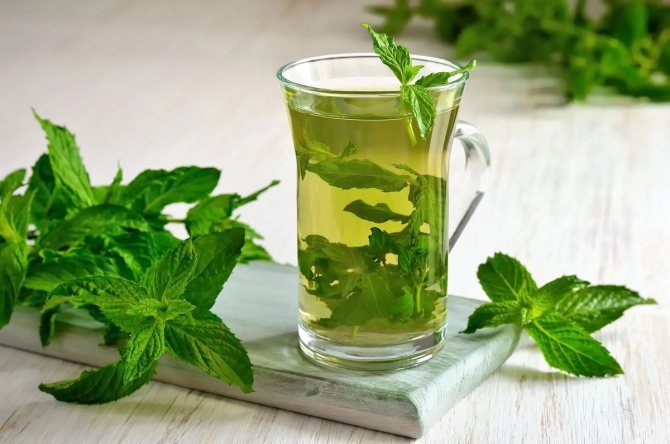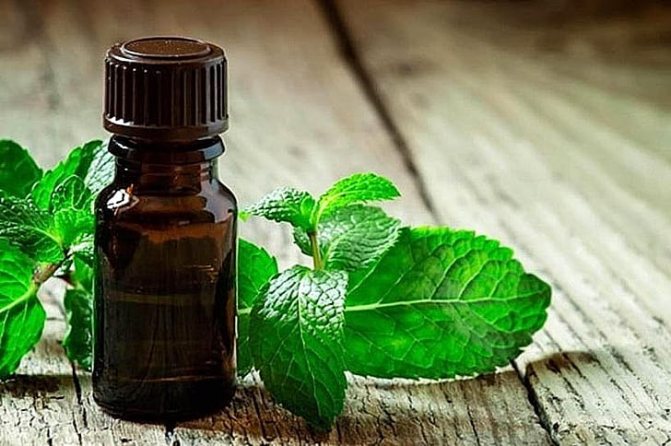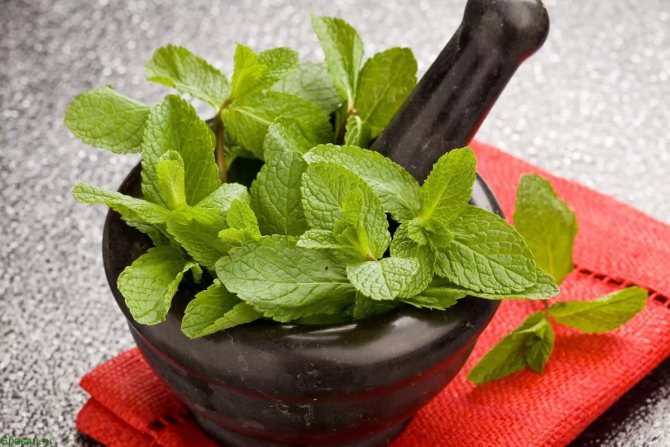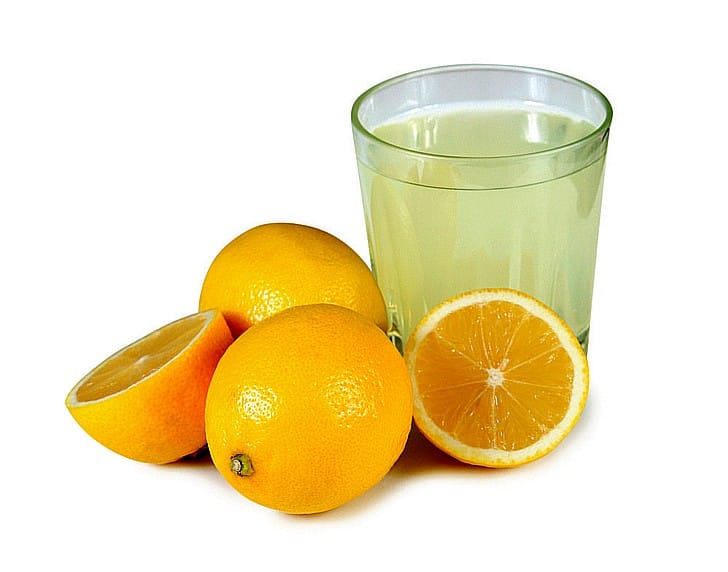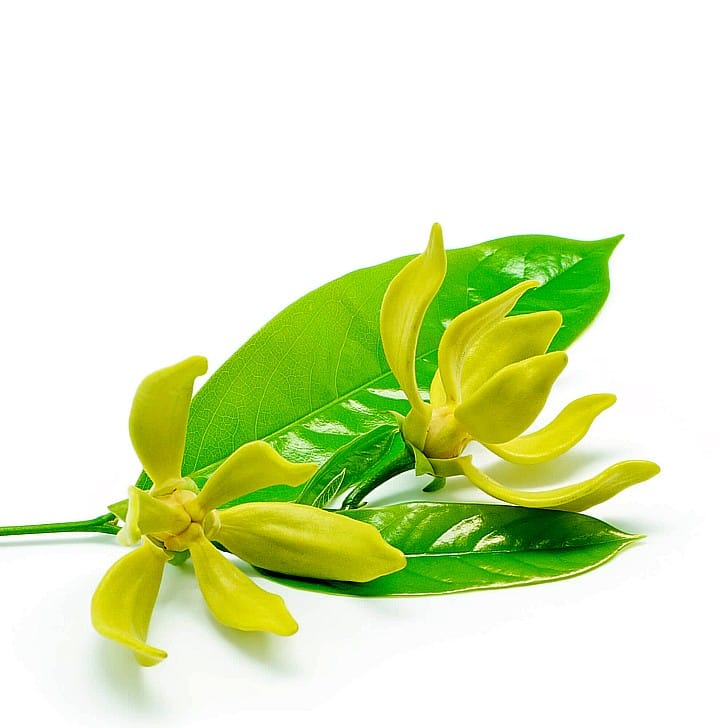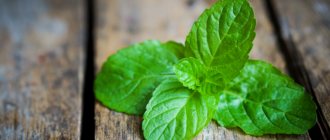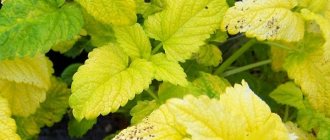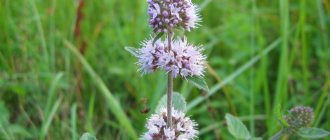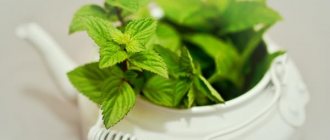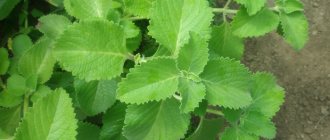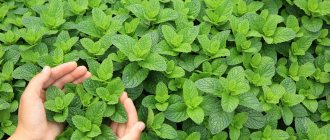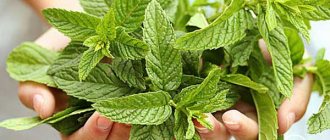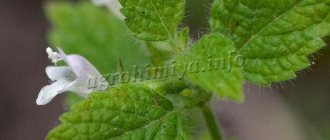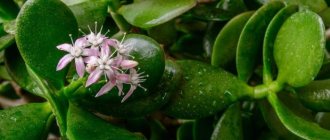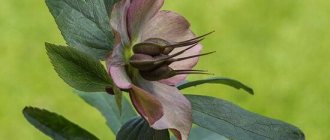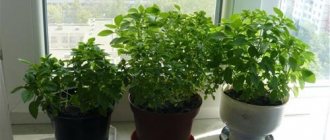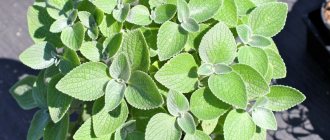The genus Mint includes about 30 plant species, which vary greatly in appearance, taste and aroma. Some of them smell deliciously of apple, chocolate, lemon, grapefruit and ginger.
Mint
Curly mint (M. spicata var. crisp)
One of the varieties of spearmint with curly corrugated leaves. A variety with a strong delicate aroma and cooling taste.
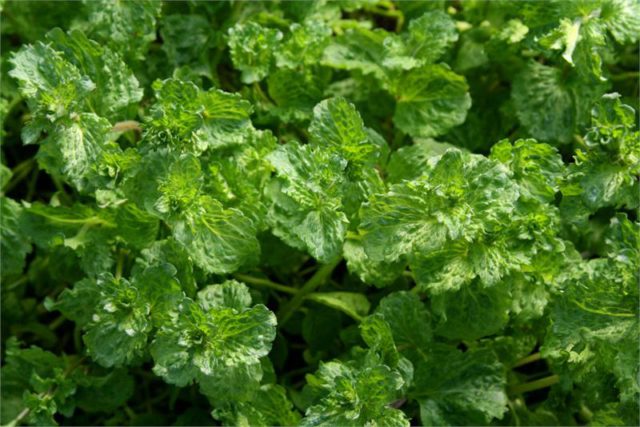
Curly mint
Some of the most popular forms include:
"Black" (var. Piperita)
A variety with inflorescences reminiscent of water mint inflorescences.
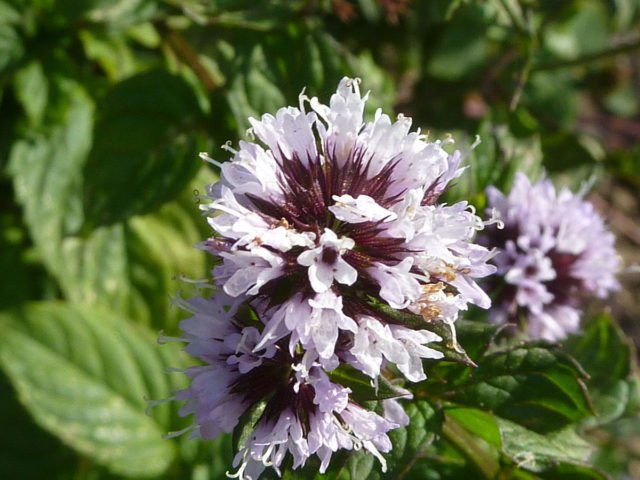

"Black"
Var. officinalis
White mint with inflorescences like spearmint.
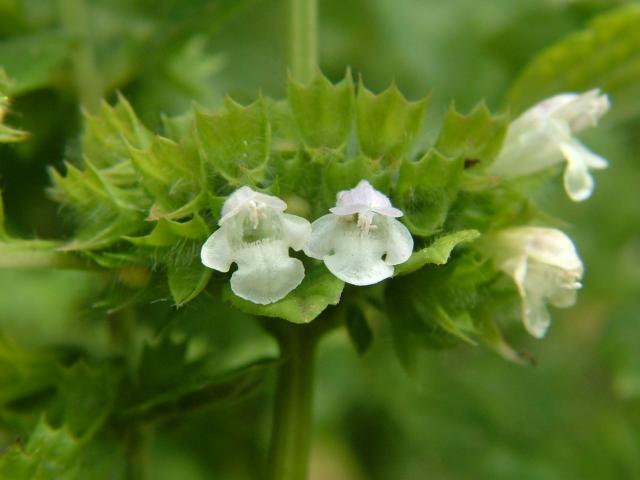

White mint with inflorescences
Water mint (M. aquatica)
The variety has a strong peppermint aroma.
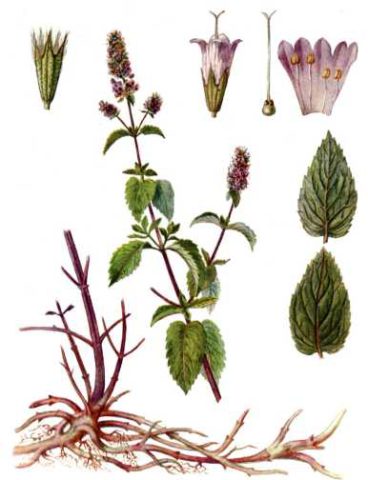

Water mint
"Eau de Cologne" ("Bergamot")
The most commonly grown cultivar has greenish-purple leaves that smell strongly of exquisite cologne.
Variety with greenish purple leaves
Mint graceful (M. gentilis)
Natural hybrid between field mint (M. agvensis) and spearmint with dense rings of purple flowers in the axils of lanceolate leaves.
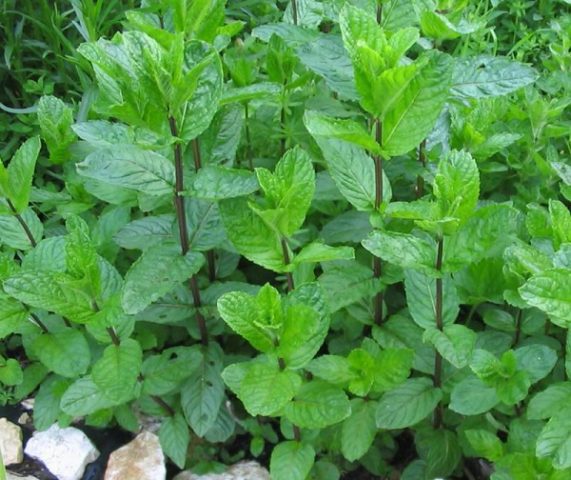

Mint graceful
The most popular varieties are "Red-stemmed Applemint" and 'Ginger ".
Spearmint (Mentha spicata)
The variety forms stems up to 60 cm high with spikelets of lilac flowers at the tops. Many varieties of this plant are cultivated, most of which have the typical mint aroma. Some varieties combine mint scent with various fruits, lavender, etc.
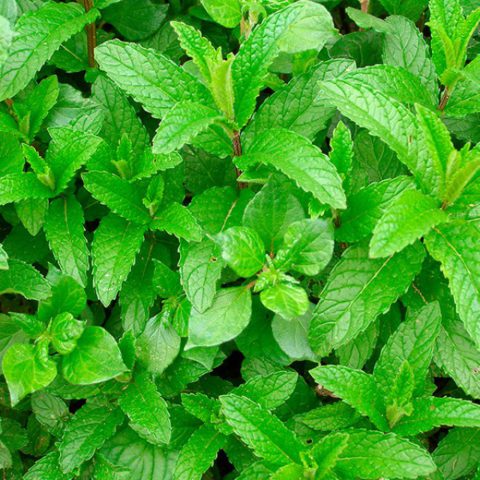

Spearmint
"Kentucky Colonel"
The variety is distinguished by its large size and wrinkled foliage.
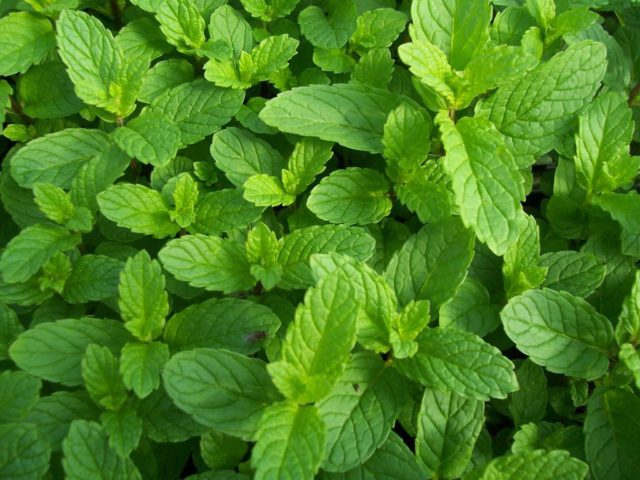

"Kentucky Colonel"
"Moroccan"
The variety has a compact shape and a very sweet aroma.
Where it grows and what it looks like
Mint is one of the most common spicy plants, numbering about 300 species (field, lemon, menthol, curly). The plant comes from the Mediterranean, it has long been used in Ancient Greece, Rome and other countries for perfumery and medicinal purposes.
Peppermint (otherwise called "English" and "cold") is a perennial herb, reaching a height of 50-100 cm. It is a cultivated plant obtained by crossing water and garden mint. The two main varieties of pepper are white, with green stems, and black (dark red stems and dark foliage).
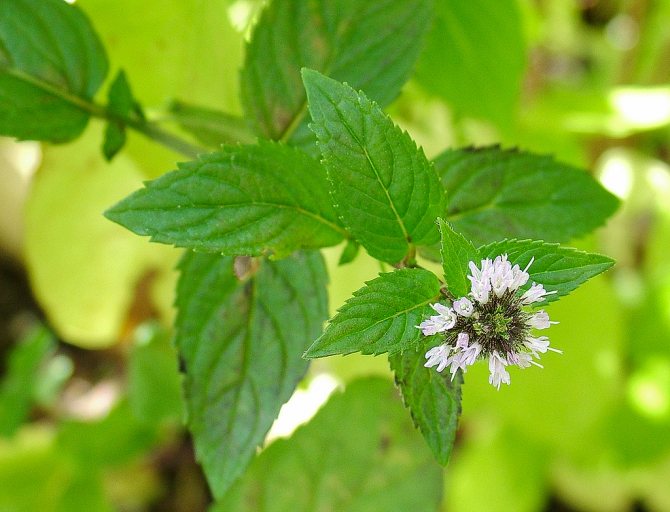

White peppermint has bright green leaves, green stems and pale flowers
Plants are highly bushy. Strong tetrahedral stems can be bare or covered with sparse hairs. The pointed leaves with a sharp-edged edge are usually oblong or ovoid. Small flowers, collected in spike-shaped inflorescences, have a light purple or reddish color. Flowering begins in June - July and lasts until August - September. The beginning of the accumulation of essential oils occurs simultaneously with the flowering of the plant, therefore, the collection of mint is timed to the period of July - August.
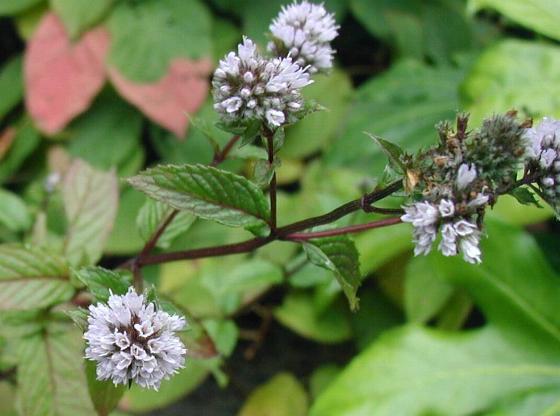

Black mint has anthocyanin reddish stems
Currently, there are about 2 dozen breeding varieties of peppermint. It is grown everywhere (in the countries of America, Europe, Asia). In Russia, industrial cultivation has been established in the Voronezh region and the Krasnodar Territory. The most famous domestic, Belarusian and Ukrainian varieties: Prilukskaya, Medicinal 4, Ukrainian pepper, Zagadka, Ocharovanie.
A little about the characteristics of the plant: video
Description
Features: stem - tetrahedral, branching, length ranges from 10..15 to 80..100 cm, leaves - opposite, short-petiolate, ovate, broadly ellipsoid or cordate with a pointed apex and serrated edges; flowers - small, mauve cups with wide-triangular denticles, collected in a false whorl near the stem in the axils of opposite leaves. Blooms from late June to September. It also features a long creeping rhizome. Cultural forms - peppermint and long-leaved mint, which are grown for the pharmaceutical industry, as well as by amateur gardeners, have been bred from wild mint by selection. Peppermint is bred in two varieties - black, with a red-brown stem and brown leaves, and white - with green leaves and stems.
Chemical composition
A distinctive feature of mint is the high content of essential menthol oils. The amount of menthol in the leaves reaches 2.7%, and in the inflorescences - up to 6%. In addition, flavonoids, carotene, organic acids are found in mint.
The healing properties of peppermint
Its beneficial properties are explained by its unique chemical composition. Its leaves and stems contain tannins, ascorbic, caffeic and other acids, as well as vitamin P, glucose and a number of other useful elements. The seeds contain about 20% oil.
For medicinal and cosmetic purposes, they use leaves, essential oil and menthol.
Leaves are usually not used fresh, but infusions and decoctions are prepared from them, as well as baths and lotions. Infusions of leaves, mixed with the addition of peppermint oil, make up the tincture "Mint drops", which is a means of stimulating appetite and antispasmodic for the stomach.
Peppermint is beneficial for a number of unpleasant symptoms:
- improves digestion, helps with nausea, is used as a choleretic;
- acts as a mild sedative and pain reliever, relieves headaches;
- in case of sleep disturbance, mint works as a weak sleeping pill;
- decoctions and infusions help stop inflammatory processes;
- mint helps to relax muscles, so it can be used for stomach or intestinal cramps;
- helps to reduce flatulence;
- used for the complex treatment of cardiovascular diseases, as it causes vasodilation;
- boiled leaves with the addition of honey helps to ease breathing in case of colds;
- infusions relieve itching and help with other skin diseases;
- rinsing with mint broth helps with stomatitis;
- used in the treatment of diseases of the urinary system.
Benefits for men, women and children
For women, mint is considered especially useful: on its basis, formulations are prepared for the treatment of inflammation of the female genital organs. In addition, it is recommended to take it to alleviate the condition with menopause. Many women may be interested in the plant as a cosmetic that reduces the oily sheen of the skin, tightens pores and helps eliminate acne.
For men, mint can help in quitting smoking, if, with a strong desire to smoke a cigarette, take 2-3 sips of tea.
For children, mint is used as a sedative. For restless babies, baths are arranged with the addition of mint infusion, and from the age of 3, weak tea can be given.
Using peppermint oil
The valuable essential oil is found in all terrestrial parts of the plant. The largest percentage of oil content in flowers (4-6%), about half the amount of oil is contained in the leaves (2.4-2.75%), and very little is present in the stems. To extract oil, mint is distilled with steam. The oil is transparent, yellowish or greenish in color, with a pleasant refreshing taste and aroma. When stored for a long time, it thickens and darkens.
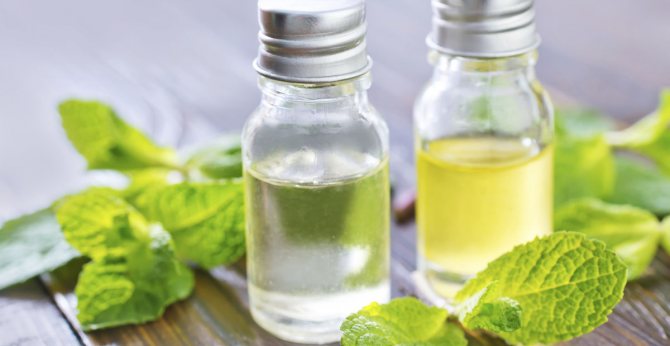

Peppermint oil is a clear, slightly yellowish liquid.
Peppermint oil is primarily used as a raw material for the manufacture of menthol, which is used in the production of liqueurs, sweets, is introduced into toothpastes and powders, and is used in pharmaceuticals (menthol petroleum jelly for the treatment of a cold, menthol sticks for migraine and in pure form for inhalation and internal use for various diseases).
Wild mint - what is this plant
The use of wild mint is great because of its beneficial properties. The extract from this herb is used in the production of cosmetic and medicinal products.
Important! Before using preparations based on mint or eating it, it is necessary to find out if there is any individual intolerance to it, since the plant has contraindications.
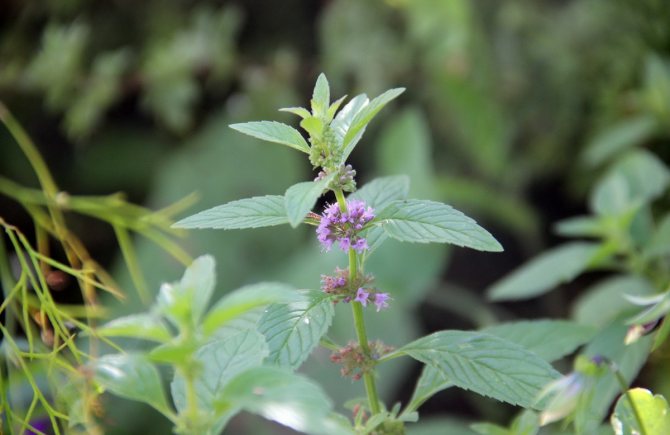

Wild mint is familiar to everyone
What it looks like, where it grows in nature
According to Latin, the more accurate botanical name for the shrub is Mentha arvensis. A medium-sized, non-spreading shrub with straight stems, but some varieties can still grow in width.
Usually the bushes have small elongated leaves with rounded or slightly pointed ends. Their edges are even, but there are varieties with a scalloped edging. To the touch and in structure, the plates are also different: there are types with velvety villi to the touch, and there are those with a smooth and glossy surface.
The flowers are located along the top of the stem and are usually small in size. Inflorescences are spherical and dense, after flowering they give seeds.
It is not always known where mint grows in nature, so many grow the plant at home on the site. In its natural environment, the wild mint plant grows in almost all deciduous forests in the world, but its true homeland is eastern and central Asia. In the 18th century, English botanists found the plant and brought it to Europe, after which they were actively engaged in breeding its varieties.
Contraindications to use
Like other medicinal products, the plant has a number of contraindications. True, there are not too many of them, but it is necessary to take into account the potential harm of mint.
Complete contraindications for use:
- hypotension;
- allergy to menthol;
- varicose veins (a decrease in vascular tone when taken can aggravate the situation);
- children under 3 years old should not take mint preparations inside, it is especially contraindicated for infants - it can even lead to respiratory arrest;
- the problem of infertility (from mint it only gets worse);
- increased sleepiness.
In addition to the listed points, it should be borne in mind that you should not drink mint tea before driving. There is also an incompletely verified statement about the negative impact on male libido.
Long-term use can be harmful: the sphincter between the esophagus and the stomach relaxes, so that the digestive juice is thrown into the esophagus, leading to heartburn.
Why mountain mint is good for you
The aerial part of mountain mint contains a large amount of menthol and essential oils. Therefore, it is beneficial for the female and male body. But before starting treatment, it is necessary to consult a specialist, since the herb has contraindications.
Benefits of mountain mint for women
Mountain mint can solve a number of women's problems. It helps with the following ailments:
- painful periods;
- unpleasant symptoms during menopause;
- inflammatory process of the genitourinary system;
- excess weight.
Why is mountain mint useful for pregnant and lactating women:
- improves sleep;
- relieves nervous tension;
- eliminates edema;
- fights headache;
- helps with toxicosis.
The benefits and effects of mint on men
Mountain mint is also good for the male body. After a busy day at work, a herbal bath relieves fatigue, relaxes, reduces pain in the back and joints. Foot baths will relieve sweating, relieve fatigue, and prevent the appearance of nail and foot fungus.
Important! Excessive consumption of mountain mint decreases testosterone production. The androgen level falls, the man loses interest in sex due to a problem with potency.
Can I use during pregnancy and breastfeeding?
Since mint is one of the best remedies for nausea and vomiting, it helps pregnant women cope with toxicosis.
Pregnant women should not take drugs that contain peppermint oil!
Peppermint decoctions are especially recommended in the first trimester of pregnancy to relieve anxiety, reduce symptoms of toxicosis and improve skin condition. To reduce nausea, it is recommended to take mint in the following forms:
- Put 2-3 teaspoons of leaves in boiling water (200-250 ml), boil for 3-4 minutes, leave covered for 10 minutes, drain. A cup of this chilled tea, taken before meals, reduces nausea and increases appetite. You can also rinse your mouth with a warm broth;
- if signs of nausea appear, knead a fresh mint leaf with your fingers and inhale deeply several times.
In the second trimester, which usually passes without toxicosis, mint is used to improve digestion and increase appetite by adding fresh mint leaves to food.
In the last trimester of pregnancy, decoctions are recommended in case of anxiety, signs of late toxicosis and itching of the skin of the abdomen and legs.
In the later stages of gestation, it is better not to use mint - it tones the uterus and can cause premature birth.
You can not use mint for those pregnant women who have stones in the gallbladder. It stimulates the secretion of bile and can cause the stone to move, which is completely undesirable during pregnancy.
Although mint is considered acceptable for pregnant women, it is best to consult a doctor before using it.
It is not recommended for lactating women to consume peppermint regularly as it reduces activity and can lead to irregular heart rhythms. Nevertheless, in case of problems with lactation, the plant helps, as it improves blood circulation. Therefore, rare single doses of broth by nursing mothers are allowed.
Growing conditions
Garden mint prefers shaded areas, although they also do well in full sun or partial shade. All soil types are acceptable, but ideal is organic and loamy soil. They love water, so wet soil works well with mint. Dry soils are poorly tolerated, so water must be provided during dry seasons, especially if the plant is in direct sunlight. The pulp should grow well in most temperate regions.
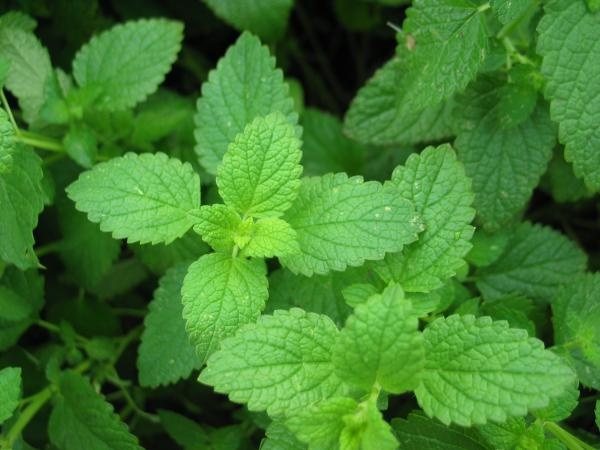

Propagation can be done through the separation of existing roots. The fragrance is well felt before flowering, so branches and leaves should be harvested for drying just before the flowers open.
Use for various conditions of the body
Peppermint can be used to improve the health of the body in a variety of ways.
Cold. With a cold, the upper respiratory tract is primarily affected. Peppermint promotes the secretion of phlegm and is recommended as an expectorant. Inhalation with the addition of peppermint oil treats a runny nose.
Insomnia. The soothing effect of mint is especially noticeable for sleep problems.To relieve overexcitation and treat insomnia, alcohol tinctures of menthol and oil solutions are used, and at home you can use a concentrated decoction or infusion of leaves.
Hangover. Considering that mint relieves nausea and heaviness in the stomach and relieves headaches, it is an indispensable remedy for hangover syndrome.
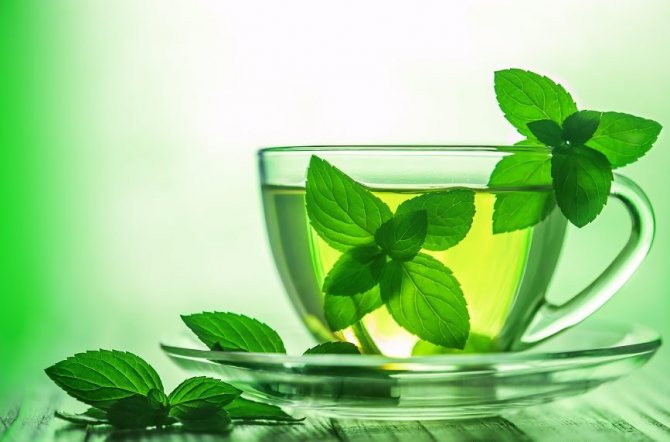

Mint tea is the most popular way to consume mint
Violation of the menstrual cycle. Mint tea and oil can help relieve pain during periods, stabilize hormones, and regulate your cycle.
Diabetes. In diabetes mellitus, mint will be beneficial as a choleretic, as well as a means of stimulating the work of the pancreas. Warm mint infusion helps to lower glucose levels. Still, doctors recommend that diabetics be careful when using it.
Acidic gastritis. Despite the fact that in some cases the constant use of mint leads to heartburn, it is successfully used to treat gastritis and even peptic ulcer disease. This is due to the plant's ability to relieve nervous excitement and nausea, often accompanying stomach diseases, as well as its bactericidal effect.
Skin rashes. Mint lotions and baths help relieve irritation and itching of the skin and eliminate rashes.
Russian folk medicine has long used mint for the purpose of refreshing, to intensify the separation of bile and perspiration. Kidney stone disease is treated with fresh juice of mint leaves, the same juice with the addition of white wine is an effective diuretic.
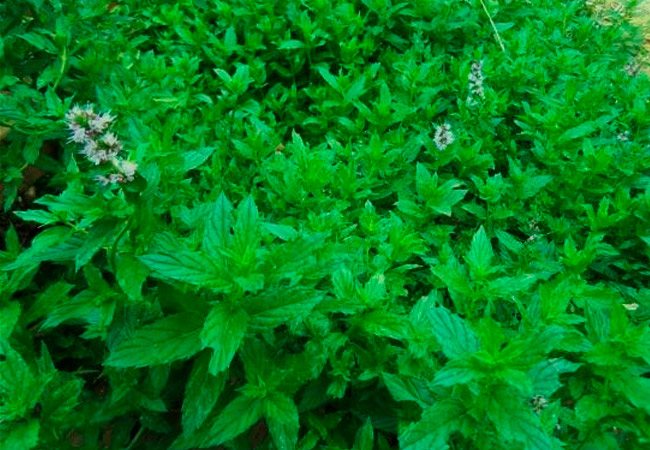

In July-August, mint blooms and it is at this time that it needs to be harvested.
The use of mountain mint
Mountain mint is widely used in cooking, folk medicine and cosmetology. Thanks to the aromatic herb, you can get rid of many diseases, tighten your skin and improve your mood. But before using, you need to know the beneficial properties and contraindications of mountain mint.
Cooking use
Mountain mint can be used fresh or dried in cooking. Thanks to the aroma and essential oils, meat and fish dishes acquire a spicy and sophisticated taste. Fresh leaves are used to decorate ice cream, vegetable salads and alcoholic cocktails.
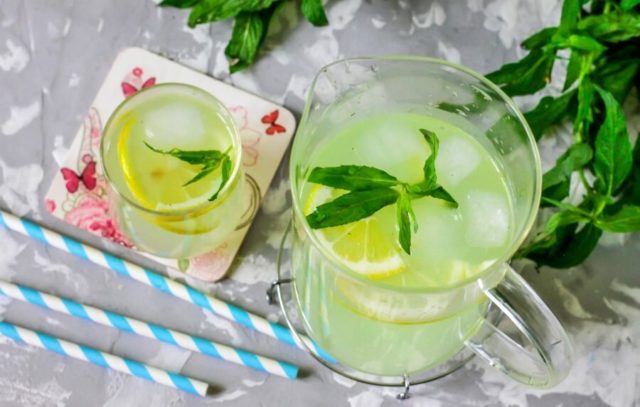

Due to its tonic properties, mountain mint is used to make tea, lemonade, syrups and mousses.
Mint in cosmetology
Mountain mint has soothing, anti-inflammatory and antibacterial properties. Thanks to these qualities, the plant has found wide application in cosmetology:
- decoction of mint promotes rapid hair growth and strengthens the hair follicle;
- mint extract tightens the skin of the face and removes wrinkles;
- mint ice cubes relieve acne and relieve inflammation.
Mint in folk medicine
Due to its rich chemical composition, mountain mint is used for self-healing. Mint broth has a sedative effect, it soothes, relieves anxiety and fatigue. Menthol tea is recommended for people who suffer from gastric, intestinal and pulmonary diseases. Fresh mountain mint foliage has anesthetic properties. Therefore, it is used to relieve toothache and migraines.
Mint Potion Recipes
For the manufacture of medicinal drugs, the entire ground part of the mint is cut off. The yellowed and dried leaves are cut off, the stems are removed, leaving only high-quality leaves and inflorescences. For storage, it is best to dry it in the shade outdoors (shelf life 2 years). Freezing is a good storage method, allowing fresh mint to be used at any time of the year. You can make mint and lemon jam. Well boiled and rolled up in jars, it can be stored all winter and used to treat bronchitis, sore throats and colds.
As a rule, peppermint is consumed internally in the form of an infusion of leaves. It is prepared with 2 tablespoons of fresh or dried leaves and 0.2 ml of freshly squeezed water.The mixture is covered with a lid, wrapped in a warm cloth and left for 1–1.5 hours. The resulting liquid is filtered and taken in 50-70 ml before meals. This drug is used to treat migraines and colds. In addition, such an infusion helps to get rid of toxins in case of poisoning, if you drink it three times a day during a meal, 1 tablespoon.
You can make a mint infusion using a different recipe. Dry leaves (1 tablespoon) are brewed with a glass of boiling water and left for 1 / 2–2 / 3 hours, after which they are filtered. Such a drug will help with abdominal pain (take 1 tablespoon every 3 hours), with vomiting (1/2 glass) and to reduce the toxicosis of pregnant women (half a glass before meals twice or thrice a day).
The same infusion will help with skin inflammation, itching or rashes, they are prepared by making lotions from it or wiping the skin of the face and body.
Fresh gruel from mint leaves will help with fungal diseases (mycoses) of the legs, if you put it on a sore spot for 50-60 minutes. You can grind the leaves with coarse salt.
During colds, bronchitis, sore throats, a good effect is given by taking tea from peppermint. To do this, it must be brewed like regular tea, pouring 1 tablespoon of crushed dry leaves with 0.25 liters of boiling water and infusing for 10-15 minutes. To relieve coughing, you need to drip a little peppermint oil into the water and inhale.
Making mint jam - video
To cure gastric disorders, prevent gastritis and reduce nausea, an infusion of 2 teaspoons of dry mint leaves per 200–250 ml of boiling water is made. The liquid is left for 0.5 hour, filtered and drunk 15–20 minutes before a meal, 60–70 ml twice a day.
With nausea and vomiting, relief will be brought by taking 20-25 drops of alcoholic tincture of mint, dissolved in a glass of water.
For the treatment of gastritis caused by high acidity, mint alone is not enough. It is added in an amount of 15 g to a mixture of other medicinal herbs: yarrow (15 g), St. John's wort (30 g), bean (one pinch). Chopped, well-mixed herbs are poured with boiling water (0.4 l), left for 2-3 hours, filtered. The resulting drink should be drunk during the day in 70 ml portions.
For patients with gastritis with low acidity, herbal tea is prepared, which includes peppermint (20 g), marsh cumin and knotweed (15 g each), yarrow, chamomile and valerian roots (10 g each), dill and caraway seeds (10 g each) ), hops (5 g). The mixture of ingredients is brewed with 1 liter of boiling water, wrapped and left overnight. 1 glass should be drunk in the morning on an empty stomach, the rest - during the day at regular intervals.
Medicinal herbs included in the collection along with peppermint, in the photo
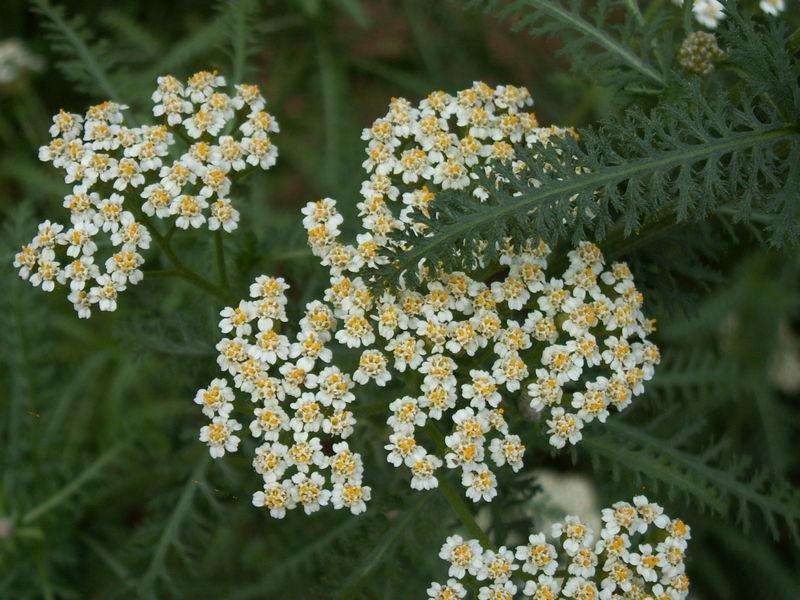

Yarrow has anti-inflammatory and bactericidal action, promotes wound healing
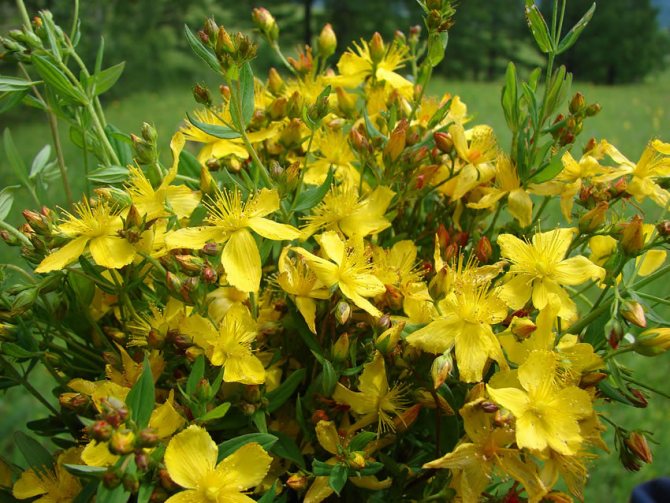

St. John's wort is used as an antibacterial, antiseptic, analgesic, wound healing, antirheumatic, diuretic, choleretic, astringent, antihelminthic agent, and also as a regenerating drug.
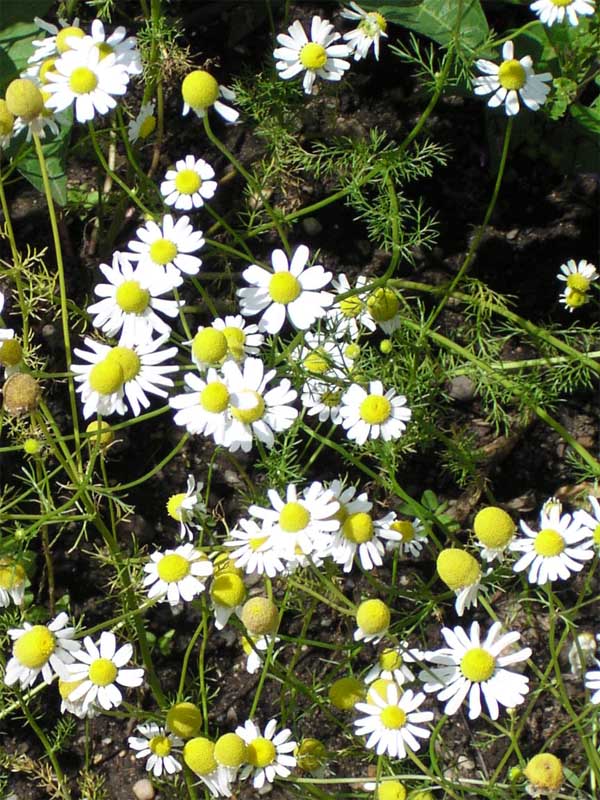

Pharmacy chamomile is a strong antiseptic with anti-inflammatory, antispasmodic, choleretic, astringent, diuretic properties
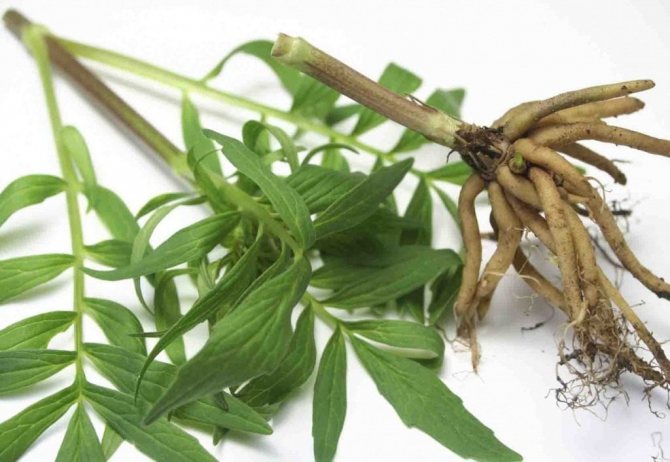

Valerian root is a good sedative that enhances the properties of mint
To prevent hypertensive attacks, use a collection of peppermint, chamomile and valerian (proportion 1: 1: 0.5). Having prepared an infusion from these herbs, they drink it at 60–70 ml per day for 30 days.
The unpleasant sensations arising from menopause can be relieved by a decoction of peppermint. Dry mint leaves (2 teaspoons) are placed in hot water (0.5 l) and boiled.
1 tablespoon of leaves, filled with 0.5 liters of boiling water and infused for 2 hours, will help eliminate bad breath if you use the infusion for rinsing the mouth.
Peppermint for 40 diseases - video
For headaches, mint can be used in a number of ways:
- bandage fresh leaves to the forehead;
- drink water with the addition of mint tincture - 10-15 drops per 200 ml. To prepare the tincture, finely crumbled leaves should be infused for 7–8 days in 70% alcohol in a ratio of 1:20), adding them to water (200 ml);
- mint, infused with triple cologne, is used to rub the frontal, temporal and occipital parts of the head;
- rub mint oil into the skin of the forehead and temples.
Taking peppermint tincture will help alleviate the symptoms of a hangover - it will relieve headaches and heaviness in the stomach. A good remedy is an infusion of mint and sage (1: 1 ratio), which, after brewing, is left in a warm place for 2-3 hours.
How to treat the liver - video
People with diabetes are advised to drink 0.25 cups of broth of mint leaves (1 teaspoon) and dandelion roots (3 teaspoons) 2-4 times a day. The specified amount of raw materials is poured with a glass of water, boiled for 6-7 minutes, insisted for 0.5 hours and filtered. This broth also improves the activity of the pancreas and has a choleretic effect.
In the presence of stones in the gallbladder, take half a glass (for children 50–70 ml) of infusion of 1 teaspoon of mint leaves per 0.25 liters of boiling water (leave for 30 minutes, filter, squeeze out the cake).
In case of neuroses and insomnia, an infusion is prepared according to the following recipe: 20 g of dried leaves are poured into 0.5 liters of warm water, insisted for 6-8 hours, filtered. Take before bedtime (adults 100 ml, children 50-70 ml).
How to make a mint tincture yourself at home - video
Harvesting and preparation
Mint is harvested before flowering and during the flowering period. Dry in the shade, in a well-ventilated place, then grind and powder, sift on sieves and store in a glass or tin can with tight-fitting lids in a cool dry place. Mint is widely used in national cuisines. So, the recipes for cooking kharcho soup in Georgian, yogurt soup in Armenian, many Azerbaijani dishes include the addition of mint. Mint is widely used for flavoring products in Ukraine. When salting vegetables, mint is included in the composition of spices, along with leaves of oak, black currant, cherry; add when pickling cabbage. As an antiseptic, mint is placed in milk, which prevents it from souring and extends the shelf life.
Beauty recipes
Peppermint is not only a medicine, but also irreplaceable in cosmetology: it is added to hair and skin masks, compresses, and creams.
Benefits for hair
Mint infusion, if rinsed with it, promotes the health of the scalp and hair (especially dry or dyed). A pleasant smell invigorates and cheers up.
An even more effective way to maintain the beauty of hair is a decoction of mint leaves and the same number of linden inflorescences. This mixture should be poured with 400 ml of boiled water and heated in a water bath for 15–20 minutes. Do not bring the broth to a boil!
The broth must be filtered and used for rinsing and even washing hair (with daily shampooing).
For the treatment of dandruff, prepare a composition of 2 tablespoons of castor oil and 2-3 drops of peppermint oil. The mask is applied to the hair and left for 30–35 minutes under a plastic cap, washed off with shampoo.
The use of peppermint essential oil to maintain the beauty of skin and hair - video
For skin beauty
To narrow the pores and reduce the fat content of the skin, masks of the following composition are made: 2 teaspoons of crushed mint leaves, string, chamomile plants are mixed, ground oatmeal is added (3 teaspoons), boiling water is added until the consistency of thick sour cream is obtained, heated in a water bath 10– 15 minutes.
The mask applied to the skin is covered with a towel. You can rinse off with plain water, and after the mask, apply argan oil to the skin.
To moisturize the skin, prepare a similar mask of mint, chamomile and plantain.
Peppermint is an unpretentious crop that does not require much effort to grow, but it will be of great benefit for a variety of diseases. For a healthy person, mint will be a pleasant ingredient in various culinary masterpieces. In order to avoid trouble, before using mint, you must familiarize yourself with the contraindications for use.
Exotic mint varieties
Indoor mint - how to plant and care
Exotic varieties of mint include rare forms, the raw materials of which are not eaten because of their pungent odor. Rare species that have a limited growing area can also be attributed to this group.
Korean mint
This type of flower has stems that smell like licorice and leaves smell like anise. Lush bushes reach 1.5 meters in height. The crown is lush, its parts are eaten.
Peduncles in the form of long shaggy brushes consist of lilac and blue flowers.
Dog mint, or ivy budra
For a strong unpleasant smell, this herb was nicknamed dog grass. Ivy budra is the second name of the herb. It is called so for the similarity of creeping stems with ivy.
Budra's leaves are round, matte, dark green in color. Small blue flowers grow from the bases of the buds. The flowering of the shrub is not wild. Grows in a zone of temperate climate. Raw dog grass is used in medicine and cooking.
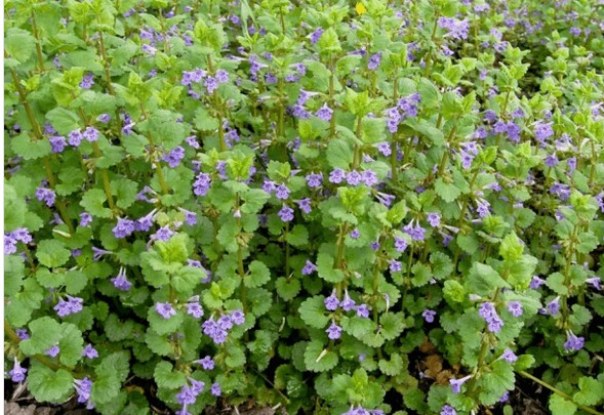

Ivy budra
Catnip, or Catnip
This species got its name from the cat's cat because of the characteristic smell that attracts cats.
The bush grows up to half a meter, tassels of inflorescences with white-purple flowers crown the tops. The culture blooms at the end of June, the shoots and flowers of this mint are used in cosmetology.
Interesting! The plant is especially popular in Turkish cuisine.

